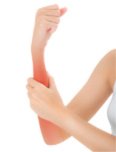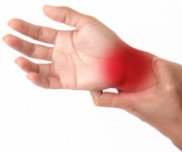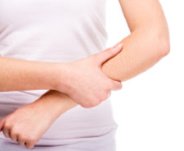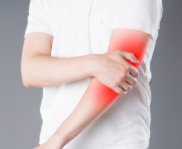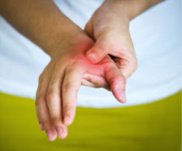DeQuervains Syndrome Anatomy
The primary area that is often painful for people with deQuervains Syndrome is the joint at the base of the thumb. This joint is held in balance by muscles and
fascia that connect it to the palm, to the wrist and into the forearm. The joint at the base of the thumb is stabilized and help together by ligaments that hold the bones together.
In most cases of deQuervains Syndrome, tension in the hand, overuse of the thumb, or unconscious and inappropriate constriction of the tissue at the base of the thumb pull the thumb closer toward the palm. This results in a destabilization of the joint at the base of the thumb and irritates the ligaments that hold the thumb joint together. Severe pain is the result.
Because of this abnormal shift in the alignment of the thumb joint, all the tissues that hold the thumb in place and those involved with the movement of the thumb become involved in the injury as well. This can include all the extensor muscles that begin in the thumb, cross the wrist and extend into the forearm, as well as the adductor muscle which pulls the thumb closer to the palm.
To learn more about deQuervains Syndrome, visit the following sections:
deQuervains Syndrome Symptoms
deQuervains Syndrome Self Care
Click the block below that most closely matches your injury for more information and to find the Toolkit we offer to help you in your recovery.


